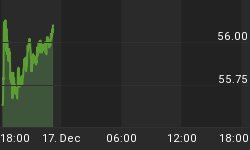The Europeans have "agreed to" another stability pact during another summit. But like most of their recent summits, they were high on rhetoric and short on details; they hope to have the details in place by March of next year.
As we noted on December 2, the entire concept of a new fiscal union, budget constraints, and penalties addressing the pressing issues is somewhat misguided. Does it help an over-indebted rule breaker to be hit with more liabilities in the form of EU budget penalties? Will tacking on fines increase the confidence of bond investors? How many "exceptions" do you think will be granted in the next five years? How does a fiscal & stability pact impact Italy's ability to refinance mountains of maturing debt in the next year? Many of these questions remain unanswered. A Reuters editorial does a good job summarizing what just took place in Europe.
The euro zone has agreed to take a big leap forward in economic integration, but failed to deliver a convincing answer to investors worried about its ability to tackle threatening debt crises in Italy and Spain.
One of the great things about looking at charts is "they are what they are and they show what they show." When you examine the weekly chart below of the S&P 500 going back to 2007, ask yourself "does this look like a bull market or a bear market?" or "does this look like a strong market or a weak market?".
The indicator (Williams %R) at the top of the chart measures momentum. Markets need momentum to continue to trend higher. The green arrow shows the thrust of momentum that occurred off the March 2009 low. Compare the area near the green arrow to the present day; they do not look similar. The blue arrow shows near market turning points, the slope of the 22-week moving average flattens out and then turns up, which does not appear to be happening in the present day. In fact, point A shows what can happen to market rallies that occur in the context of a downward-sloping 22-week moving average. Market action near point A and point B look similar; stocks did not perform well after point A.

Until (a) Williams %R shows an improvement in momentum, and (b) the slope of the 22-week begins to flatten out/turn up, the odds will continue to favor bearish outcomes. Could both (a) and (b) occur in the coming weeks? Sure, but presently they do not point to sustained gains in risk assets. As we mentioned earlier this week, the S&P 500 could make another push toward 1,285 to 1,340, but knowing what we know today, the gains will most likely be given back within a matter of weeks.
We continue to believe long-term investors face unfavorable odds owning stocks and commodities (DBC). The S&P 500 (SPY) and NASDAQ (QQQ) will most likely be lower in three months. Money printing by the Fed and/or ECB remains the most significant bullish wildcard for investors. If they print, it can change the market's dynamics. The Fed releases a statement on December 13, which could be the push stocks need to make another run at the S&P 500's 200-day moving average.
The video below, originally released on November 30, uses daily charts and moving averages to address the bull/bear debate. As outlined in the video, on a daily chart of the S&P 500 the following are in place:
- Price is below the 200-day moving average, which is bearish.
- The 50-day moving average is below the 200-day moving average, which is bearish.
- The slope of the 200-day is negative, which is bearish.















